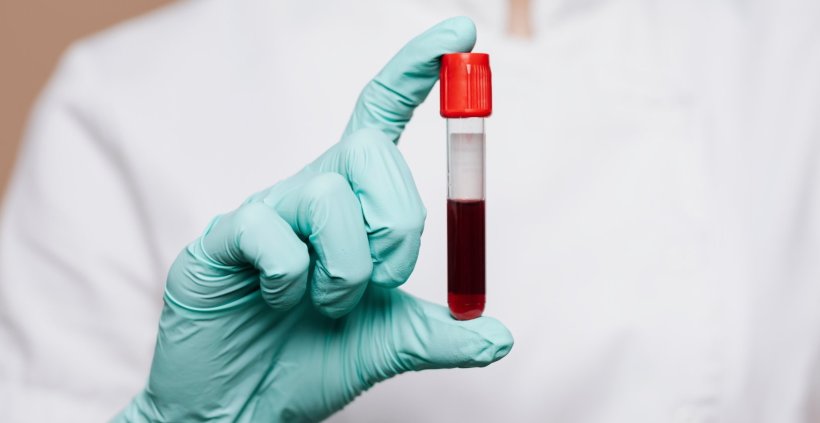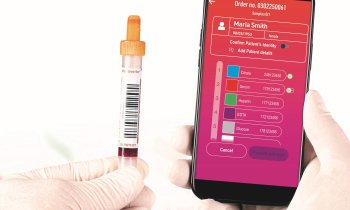
© Rawpixel.com – stock.adobe.com
Article • Challenges and opportunities
Molecular pathology in Europe: in search of standardization
Tackling standardization of molecular pathology at a European level remains a major challenge, according to speakers at the 35th European Congress of Pathology in Dublin. One leading expert warned it would be ‘very difficult’ to achieve, though the session also heard about potential solutions such as educational steps to consistently train future pathologists at a high and consistent level.
Report: Mark Nicholls
Session co-chair Olli Carpén, Professor of Pathology at the University of Helsinki, said that as new assays emerged for prognostication and prediction of drug distribution to appropriate patient groups, standardization of pathology was of paramount importance.
The necessity of molecular pathology standardization in Europe is related to a more precise diagnosis, prognosis, and prediction of the most suitable therapy and basis of choices of treatment
Giorgio Stanta
In his presentation, Giorgio Stanta, Professor of Pathology at the University of Trieste, said: ‘Everything is changing continuously and we have to follow these changes, but standardization of molecular pathology is not an easy task. We have an urgent need for standardization of the molecular analysis, reproducibility, and exchangeability among European institutions to obtain safety and efficacy of treatment for the patient. ‘The necessity of molecular pathology standardization in Europe is related to a more precise diagnosis, prognosis, and prediction of the most suitable therapy and basis of choices of treatment.’
Stanta, an expert in molecular pathology and diagnosis for oncology, outlined the work conducted so far, and challenges still to be overcome. He highlighted how the European Society of Pathology (ESP) Molecular Pathology Working Group is working with the Organisation of European Cancer Institutes (EEIC) towards standardization in heterogeneity, pre-analytical conditions, and clinical evaluation of NGS (next generation sequencing) in breast and colorectal cancer. ‘All these projects are very important for clarity,’ said Stanta.
Ensuring reproducible results through standardization
A central issue is irreproducibility of clinical research, he pointed out. At the root of this, he pointed out, lie problems of experimental design and interpretation, the complexity of biological and medical information, the pre-analytical condition, highly sophisticated methodologies, intra-tumour heterogeneity, and institutions using similar, but different biomarkers.
Solutions, however, include design and analysis support, medical tumour boards, CEN (European Committee for Standardization) technical specification and ISO standards, internal and external control, and new sampling techniques such as liquid biopsy. Stanta underlined the need for an expert steering committee, suggesting that those driving the European Masters on Molecular Pathology would be best placed for this task. ‘We have huge difficulties in standardization because of continuous development of diagnostic molecular pathology, so the standardization must be plastic with continuous corrections,‘ the expert summarized.
IVDR: No time to waste
Kurt Zatloukal from the Institute of Pathology at the Medical University of Graz discussed reference materials for standardization, guiding delegates through the IVDR (in vitro diagnostic medical devices regulation) and its associated challenges, particularly with calibration of devices and control materials.
Even though the window for implementation has been extended until May 2026 due to the challenges of the Covid-19 pandemic, he warned that time was of the essence as the process could take several years: ‘The new regulation gives very specific requirements for a diagnostic assay, not only if it is manufactured by a company and CE marked but also when we do it in our own laboratory.’
Recommended article

Article • Regulatory challenges for AI-based diagnostics
Further IVDR changes: a step in the right direction, but…
New changes made to the timetable for the In vitro Diagnostic Medical Device Regulation (IVDR) across Europe could have a significant impact on manufacturers and users, an expert points out. While the extension of the transition period was a welcome step, other changes which were hoped for remain painfully absent.
IHC biomarkers and LDT – still alive and kicking
Frédérique Penault-Llorca, professor of pathology at the University of Clermont Auvergne, focused on standardization of the theranostic immunohistochemistry (IHC) through the preanalytical, analytical, and postanalytical phase. She stressed that IHC biomarkers will be around for a while, despite suggestions of their declining importance. Regarding the quality of the tissue and the results, she underlined the need for education and training as well as providing guidelines for scoring, reporting, and monitoring internal quality.
She also examined implementation of new biomarkers safely into clinical practice, emphasizing the need for a sufficient number of cases; testing, training, and monitoring; and standardized reports that are clear for clinicians in line with current guidelines. ‘Heterogeneity still exists, despite major progress in the last 20 years,’ she said, adding that standardization of the pre-analytical phase is the cornerstone of the subsequent analysis. The use of lab-developed tests (LDTs) will remain important in Europe because of economic issues and equipment constraints, despite IVDR regulation. She also pointed to the value of education and the Molecular Pathology Masters course, outlined in detail by Marius Ilié as the final presentation of the session.
During his lecture on standardization through training, Ilié, Professor of Pathology at the Nice Medical School and co-chair of the congress session, outlined the benefits of the course:
- delivering objective evaluation of knowledge and competences of the new professionals in the field;
- facilitating movement of young molecular pathologists within the EU;
- improved harmonization and standardization of clinical and molecular pathology; and
- providing support for the continuously increasing use of diagnostic, prognostic and predictive biomarkers directly related to treatment choices.
Ilié said of 87 applications, 23 students from 18 countries were admitted on the two-year course. With an array of modules, candidates will be certified molecular pathologists on the course, which will reinforce a standardized approach to molecular pathology.
20.06.2024











